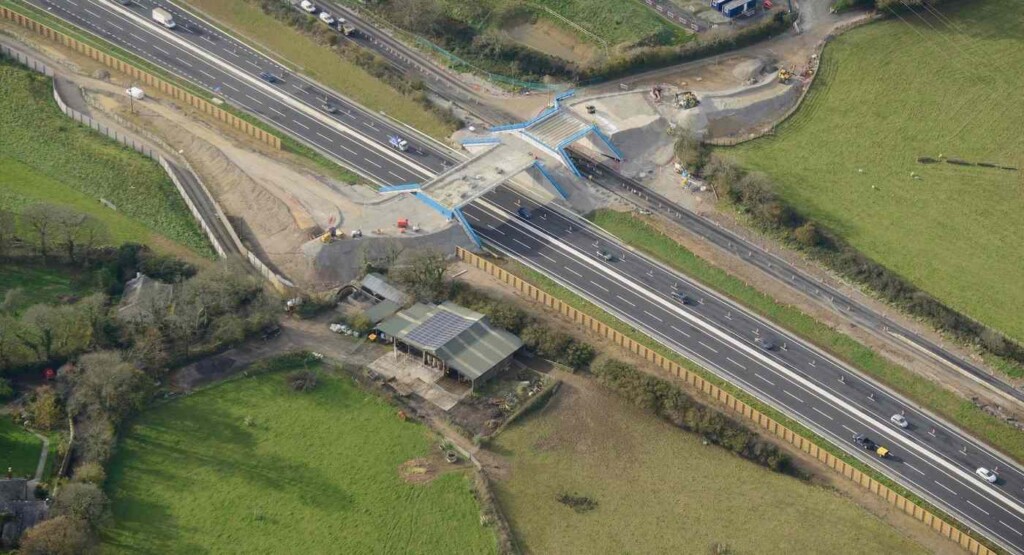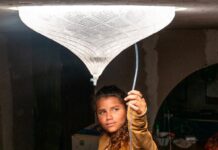
Nationally protected badgers have just been given the right of way by Cornwall council, with a new wildlife crossing that will allow them to pass over a busy road unharmed.
To reach across the four-lane divided highway, the crossing, nicknamed the “badger bridge,” is nearly 150 feet long and 40 feet wide.
It’s designed to provide safe passage across the road for various wildlife species, including badgers, voles and other small animals, insects, and birds.
The bridge is part of National Highways’ major A30 Chiverton to Carland Cross project at Marazanvose. The dual-deck bridge has been constructed by contractor Costain over the road as part of the $375 million project (£330 million).
The bridge will not only provide better connectivity for wildlife but also a footpath and trail for horse riders.
“We’re really proud of the environmental work being carried out as part of this project, and the creation of the green bridge is a leading part of that,” said Andrew Alcorn, National Highways’ Program Manager for the A30 Chiverton to Carland Cross plan.
“Our green bridge will be the third for the company, one of only a handful across the country, and once completed, it will provide a safe crossing for various species of wildlife, as well as for walkers and horse riders.”
“Along with other environmental measures, we’ve built a total of 33 multi-species crossing points as part of the project, and we look forward to seeing the bridge bloom for many years to come, providing a real legacy for the scheme and for Cornwall.”
Top soiling work is now under way which is turning the bridge from grey to brown and this will be followed by green planting in the autumn. Above, two hedgerows built of hawthorn, elder, and other native plants will run across the bridge.
MAKING ROOM FOR NATURE: AI Safety System Stops Train After Detecting Elephants Crossing the Tracks Ahead
Green bridges, which were first built in France in the 1950s and pioneered in the Netherlands in 1990, are now becoming an important part of the sustainability of infrastructure projects.
Not only do they create a safe crossing point for wildlife movement, but they assist in joining up habitats and connecting populations, and making wildlife more resilient. There are only a handful of green bridges across England, however.
In the US, some of the largest wildlife crossings in the world span California highways for the sake of mountain lions.
MORE INFRASTRUCTURE LIKE THIS: Yukon to Yellowstone Wildlife Corridor Makes Massive Gains Since ‘Y2Y’ is Dreamed Up in the 90’s to Help Grizzlies
In Cornwall, the Chiverton to Carland Cross plan will see a total of 87,000 trees planted across the landscape, in addition to the green bridge planting. With over 40,000 already in the ground, the remainder will be installed in suitable conditions later this year.
Hopefully otters, badgers, bats, hedgehogs, and reptiles will have access to a wider area of habitat.
BRIDGE Over To Social Media And SHARE This Story With Your Friends…





















This is needed everywhere! I accidently hit a mother duck and her flock who was trying to cross a highway during rush hour traffic. She missed one car, but ran into my lane, and I just couldn’t swerve fast enough. I looked behind me and here comes another group of cars on their way to finish off the flock. I was devasted for a few days knowing she was just trying to get her babies to safety, but it was terrible timing. Wildlife bridges (even tunnels) can help with this.
We have several wildlife crossing in Banff, Alberta. Once the animals learn they are there, they are put to good use.
Thank you for sharing this message. Good to identify “Good News.”